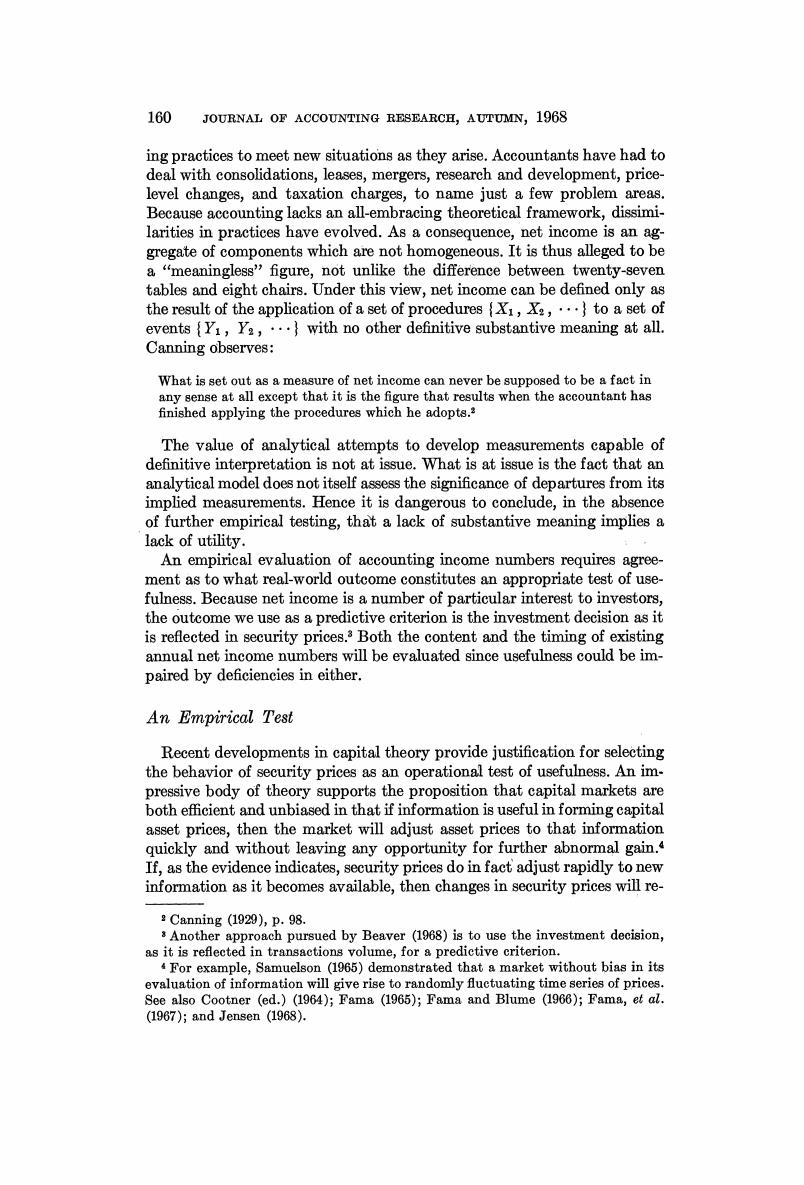正在加载图片...

160 JOURNAL OF ACCOUNTING RESEARCH,AUTUMN,1968 ing practices to meet new situations as they arise.Accountants have had to deal with consolidations,leases,mergers,research and development,price- level changes,and taxation charges,to name just a few problem areas. Because accounting lacks an all-embracing theoretical framework,dissimi- larities in practices have evolved.As a consequence,net income is an ag- gregate of components which are not homogeneous.It is thus alleged to be a "meaningless"figure,not unlike the difference between twenty-seven tables and eight chairs.Under this view,net income can be defined only as the result of the application of a set of procedures Xi,X2,...}to a set of events Y1,Y2,...}with no other definitive substantive meaning at all. Canning observes: What is set out as a measure of net income can never be supposed to be a fact in any sense at all except that it is the figure that results when the accountant has finished applying the procedures which he adopts.3 The value of analytical attempts to develop measurements capable of definitive interpretation is not at issue.What is at issue is the fact that an analytical model does not itself assess the significance of departures from its implied measurements.Hence it is dangerous to conclude,in the absence of further empirical testing,that a lack of substantive meaning implies a lack of utility. An empirical evaluation of accounting income numbers requires agree- ment as to what real-world outcome constitutes an appropriate test of use- fulness.Because net income is a number of particular interest to investors, the outcome we use as a predictive criterion is the investment decision as it is reflected in security prices.3 Both the content and the timing of existing annual net income numbers will be evaluated since usefulness could be im- paired by deficiencies in either. An Empirical Test Recent developments in capital theory provide justification for selecting the behavior of security prices as an operational test of usefulness.An im- pressive body of theory supports the proposition that capital markets are both efficient and unbiased in that if information is useful in forming capital asset prices,then the market will adjust asset prices to that information quickly and without leaving any opportunity for further abnormal gain. If,as the evidence indicates,security prices do in fact adjust rapidly to new information as it becomes available,then changes in security prices will re- Canning (1920),p.98. 3 Another approach pursued by Beaver (1968)is to use the investment decision, as it is refected in transactions volume,for a predictive criterion. For example,Samuelson (1965)demonstrated that a market without bias in its evaluation of information will give rise to randomly fluctuating time series of prices. See also Cootner (ed.)(1964);Fama (1965);Fama and Blume (1966);Fama,et al. (1967);and Jensen(1968)